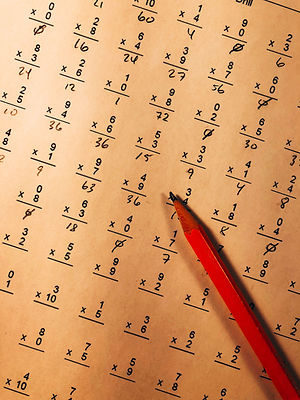
MathBait™ Multiplication
BUZZ
Share this resource!
Whether just learning to skip count or already a multiplication pro, BUZZ is always a blast to play. Around the dinner table, in the classroom, or in the car, students can practice their skip counting and identification of multiples strengthening their mathematical foundation with lots of fun and laughter.
Details
Resource Type
Digital Game
Primary Topic
Skip Counting
Unit
1
Activity
9
of
9
This MathBait™ Multiplication game is a favorite. It is great for students just mastering skip counting to adults. It's a blast to play in the car, at the dinner table, and in the classroom. Our digital version offers two fun modes, but Buzz can also be played without any technology at all. This game is great as a warm-up or as a full activity.
Begin by selecting a "Buzz Number". At this stage stick with 2, 3, or 5 to start with before graduating to other values. Make sure the number of players is not equal to the Buzz Number (For instance, if a mom and son are playing together, they should pick 3 or 5 as picking 2 with two players will lead to one player having the majority of the forbidden numbers).
Players take turns counting by 1's (1-2-3-4). Here's the twist. On your turn if your number is either a multiple of the Buzz Number or if it contains the Buzz Number, you must instead say "Buzz". In other words, when playing with 2's all the numbers we'd traditionally say when counting by 2's are forbidden as well as numbers that contain a 2 like 23. After a Buzz, the next player must remember the count and continue.

Buzz is both a game of skip counting and multiples and concentration. If a player says a number rather than "buzz" they are out, or if a player forgets the count. However, there are many rule variations you can enact to keep play light and fun.
Example: If playing with a Buzz Number of 3, play would follow the sequence 1, 2, buzz, 4, 5, buzz, 7, 8, buzz, 10, 11, buzz, buzz, 14, buzz, 16, 17, buzz, 19, 20.... Note "buzz" should be said on the multiples (or skip counting numbers) of 3 but also on any number that contains a '3' such as 13 and 23. The 30's are particularly difficult as all numbers are buzz numbers and players must keep track of where they are in the count.
The Digital Game
Digital game play includes two selections: verbal and entry. Verbal is great for the classroom or larger groups working with a shared device. In Verbal mode, players set a "pass time" (in which the device is passed to the next player). Players say the number (or "buzz") aloud and tap on their associated choice (Number or Buzz). The game will then direct what player to pass the device to. If a player taps (and says) the number when they should have said "buzz" (or vice versa) the game will indicate "Game Over".
In Entry Mode, players enter the value or players enter the value or press Buzz. Both methods have a timer that can be set at the start of the game. The digital game also includes Help Mode, which tells players the previous number. Help mode is great for younger players.
As with all our digital games, for the best experience we recommend students select full screen mode (this can be achieved by clicking the button in the bottom right corner of the game). BUZZ has been designed to work on a longer screen making it great for a mobile device although it can also be played on a tablet, laptop, or desktop computer.
©MathBait created with GeoGebra
The material on this page is copyrighted by MathBait™. Please use and enjoy it! MathBait™ provides a temporary license for Non-Commercial purposes. You are not permitted to copy, distribute, sell, or make derivative work without written permission from MathBait™.
Tell us what you think!
Click to rate this activity

